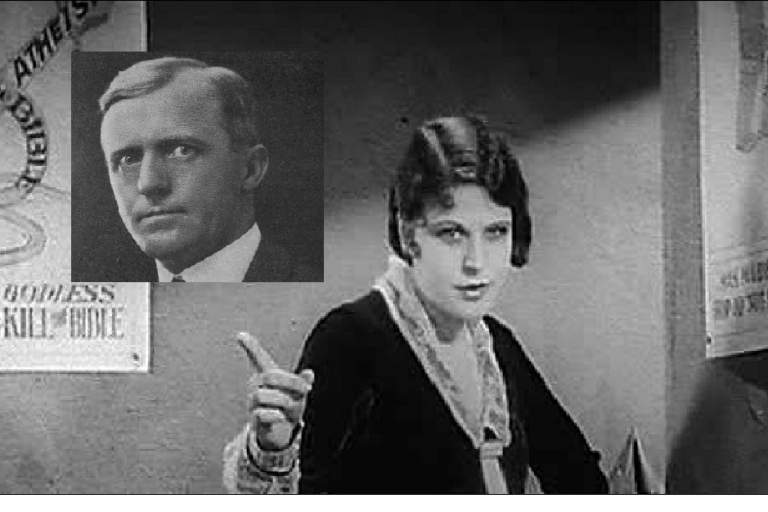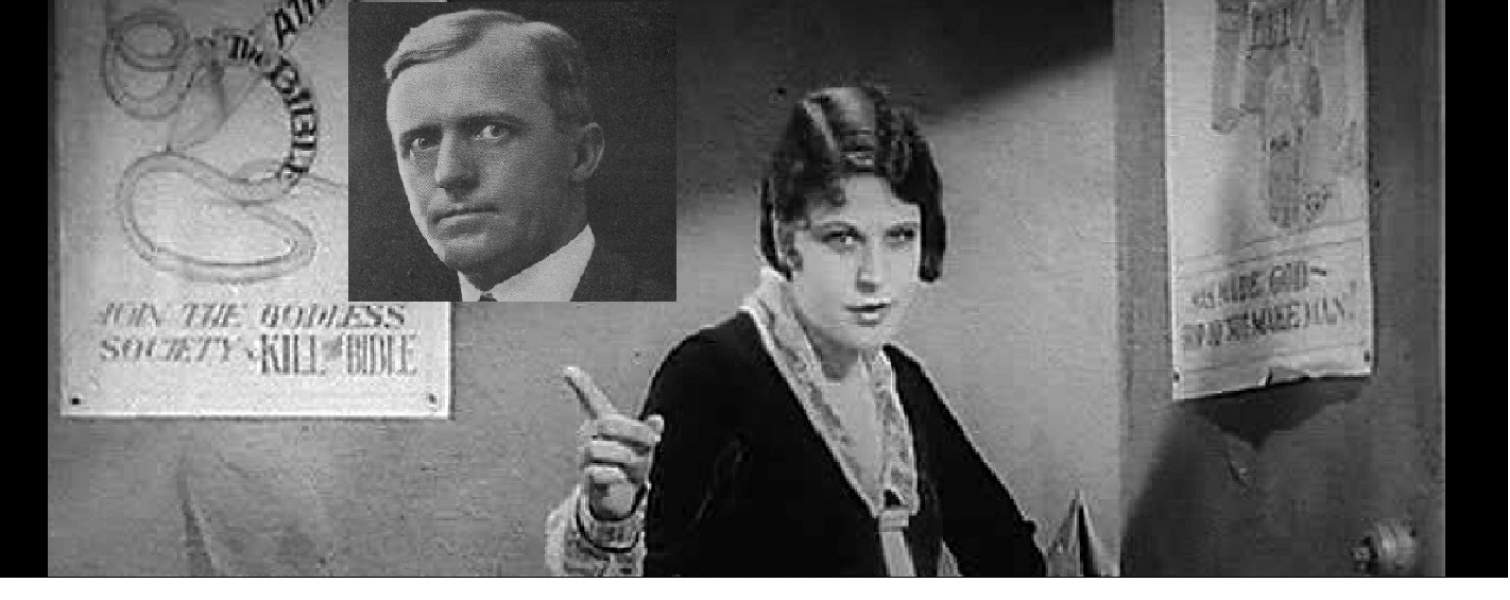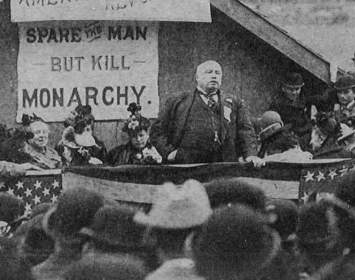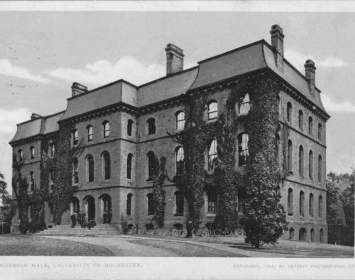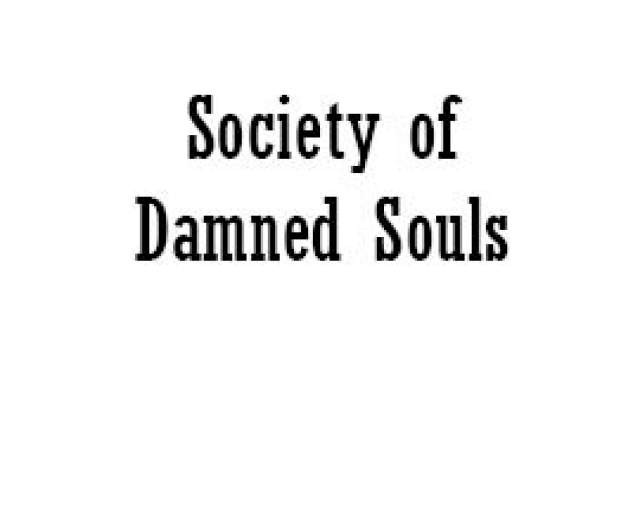
The American Association for the Advancement of Atheism, a group whose name clearly summarizes its objective, was founded in 1925 in New York City. Its founders were Charles Lee Smith (1887–1964), a freethinking attorney (photo at right); Freeman Hopwood, the grandson of a prominent frontier evangelist; and Woolsey Teller, an atheist writer and lecturer. The organization became known as "the Four A’s." Its headquarters never left New York City. Its connection to the Freethought Trail rests with its most successful outreach project, in which a satellite group in Rochester, New York, played a nationally prominent role.
As president of the Four A’s, Charles Smith discovered that the options for actually advancing atheism in the America of the 1920s were sharply limited. Smith had scored one coup when he booked a public debate against Aimee Semple McPherson, a nationally prominent evangelist. But resources and public support remained meager until Smith announced a plan to organize student atheist groups on college and high school campuses across the country.
Smith’s plan for a "junior atheist movement" attracted enormous media attention, far out of proportion to any success the initiative actually achieved. One of the first Four A’s student groups to form was the Society of Damned Souls at the University of Rochester—at that time, still a Baptist institution. The "Damned Souls" received coverage in the New York Times and two successive issues of Time magazine, splashing the Four A’s and its junior atheist movement into the national consciousness.
At its peak, the Four A’s had sparked the formation of only some twenty college groups and a handful of high school groups, involving at most three thousand individual members. The New York Times covered a group at Yale whose platform was “that the old religion is bunk, that God is a figment of the diseased mind, and Heaven a luscious frankfurter held out on the end of a stick to keep the anthropoid rabble working like the trained dog in a circus.” One high-school group in Los Angeles succeeded in recruiting Queen Silver, a former child atheist evangelist who was also a precocious protest organizer.
In a quirky bit of cultural fallout, the Four A’s junior atheist movement inspired the final silent film directed by motion-picture titan Cecil B. deMille. The Godless Girl (1928) presented the melodramatic tale of a high-school atheist organizer very loosely based on Queen Silver, portrayed by starlet Lina Basquette. In the film’s early scenes, atheist arguments against the existence of God and in favor of Darwinian evolution are actually presented accurately. The film’s impact was blunted because the public was losing interest in silent films in preference to "talkies." The Godless Girl became one of DeMille’s least successful pictures.
In addition to its junior atheist movement, the Four A’s held annual conferences and weekly lectures in New York City. On the national level, it conducted unsuccessful lawsuits to end paid chaplaincies in Congress and to strike "In God We Trust" from U.S. currency. The Great Depression devastated its finances. The American Association for the Advancement of Atheism ceased to function after 1933, aside from a newsletter that continued to be published in its name under various titles until around 1988.
As for Charles Smith, in 1937 he acquired ownership of the once-prominent freethought periodical The Truth Seeker, becoming its third editor. He was assisted by Four A’s cofounder Woolsey Teller. The two transformed The Truth Seeker into the journal of socially conservative atheism, emphasizing anti-Communism, anti-Semitism, racism, and eugenics. Circulation plummeted.
In one of few passings of the torch from an early twentieth-century atheist activist to one of the later twentieth century, in 1961 Smith gave $5,000 to Madalyn Murray O’Hair, one of the first large gifts she received in support of her lawsuit against the Baltimore public schools that led to a 1963 U.S. Supreme Court decision prohibiting officially led Bible readings in public schools. The case made O’Hair one of the most recognizable figures in late twentieth-century American atheism.
Smith died in 1964 in San Diego, California. He was cremated.
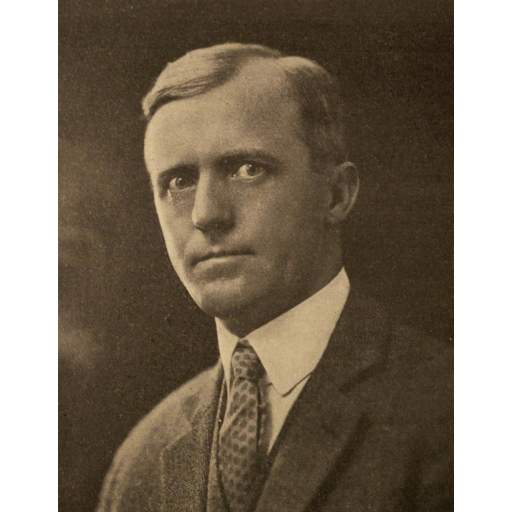
Charles Lee Smith
Charles Lee Smith, founding president of the American Association for the Advancement of Atheism (the Four A's).
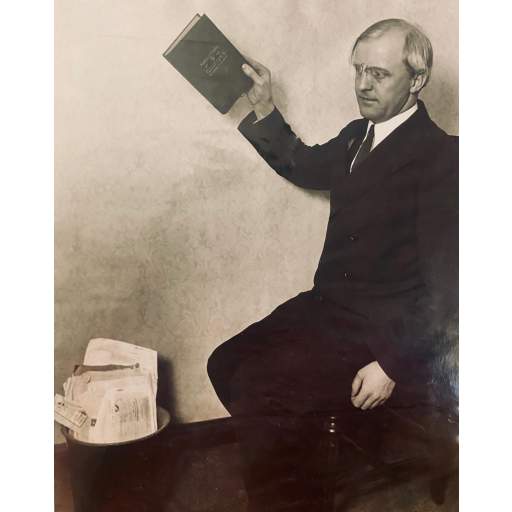
Smith Trashes Bible
In a publicity photo from later in his life, Smith prepares to hurl a Gideon Bible into the wastebasket. Image courtesy of Roderick Bradford.
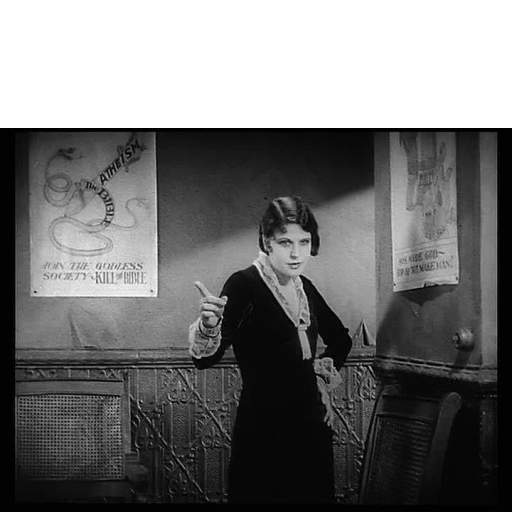
Godless Girl still
Lina Basquette portrayed the title character in Cecil B. DeMille's The Godless Girl (1928). The film was influenced by the "junior atheist movement" of the Four A's and loosely based on one of its Los Angeles recruits, child evangelist-turned-atheist campaigner Queen Silver.
Associated Causes
Associated Sites
Associated Historical Events
Scandal of the Society of Damned Souls
1926–1927
